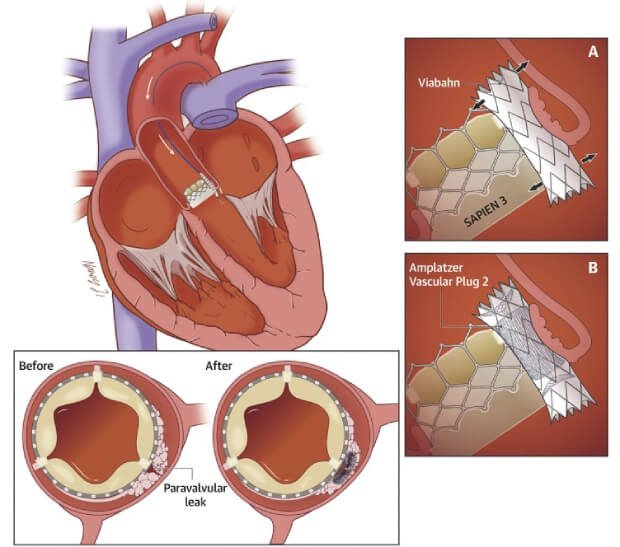Paravalvular Leak (PVL) Closure
Paravalvular leak (PVL) closure is a procedure used to treat leaks that occur around a prosthetic heart valve, either mechanical or biological, after valve replacement surgery. These leaks, called paravalvular leaks, develop when blood escapes around the edges of the valve prosthesis rather than flowing directly through it. While small leaks are often harmless, significant leaks can lead to complications such as heart failure, hemolysis (destruction of red blood cells), and other cardiovascular issues, necessitating closure.
What Causes Paravalvular Leaks?
PVLs occur when the replacement valve does not fully seal against the heart tissue. The potential causes for this include:

Why is PVL Closure Necessary?
For patients with moderate to severe PVLs, treatment is essential for managing symptoms and preventing further complications. Some key reasons for PVL closure include:
Methods of PVL Closure
PVL closure can be performed either surgically or via a transcatheter approach, depending on the severity of the leak, the patient's overall health, and the location of the leak.
1. Surgical PVL Closure
In more complex or severe cases, particularly when the valve or surrounding tissue has become infected or damaged, a repeat open-heart surgery may be necessary to either repair the existing valve or replace it entirely. Surgical PVL closure is effective but comes with the risks associated with open-heart surgery, especially in patients who may not be able to tolerate another invasive procedure.
2. Transcatheter PVL Closure
The transcatheter approach is minimally invasive and is becoming the preferred method for PVL closure, especially in high-risk patients who are not candidates for repeat surgery. The transcatheter technique involves the use of a catheter, which is threaded through a vein (usually from the groin) and guided to the heart under imaging.
Benefits of Transcatheter PVL Closure
Risks and Considerations
As with any procedure, PVL closure carries some risks, including:
Patient Selection for PVL Closure
Not all patients with a PVL require immediate intervention. For those with small, asymptomatic leaks, close monitoring with regular imaging may be sufficient. However, patients presenting with significant symptoms—such as heart failure or hemolysis—or those at high risk for complications are prime candidates for PVL closure, especially if they are not ideal candidates for additional surgery.



